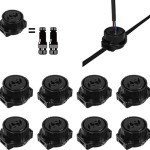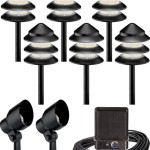How to Remove Mildew From Outdoor Furniture Fabric
Outdoor furniture, while adding elegance and usability to your outdoor spaces, is often exposed to harsh weather conditions, leading to the growth of mildew. This unsightly fungus not only detracts from the aesthetic appeal of your furniture but can also pose health risks. Fortunately, with the right approach, you can effectively remove mildew from your outdoor furniture fabric and restore its pristine look.
Identifying Mildew
Before embarking on any cleaning process, it is essential to correctly identify mildew. Mildew typically appears as a fuzzy, dark-colored growth, often with an unpleasant musty odor. It can be found on fabric surfaces, cushions, and even wood frames. While some people might confuse mildew with dirt or stains, its distinct characteristics, including the fuzzy texture and the characteristic smell, make it identifiable. If you suspect mildew on your outdoor furniture, take a close look to confirm its presence.
Cleaning Methods
Once mildew has been identified, you can proceed with cleaning. The most effective method depends on the type of fabric and severity of the mildew infestation. In some cases, mild cleaning agents like soap and water may suffice. However, for more stubborn mildew stains, stronger solutions are required. Here are some steps to remove mildew from outdoor furniture fabric:
1. Preparation
Begin by preparing your workspace. If possible, move the furniture to a well-ventilated outdoor area, such as a patio or deck. Ensure you wear protective gear, such as gloves and a mask, to avoid inhaling mildew spores. Next, use a soft-bristled brush or a vacuum cleaner with a brush attachment to remove loose debris and dust from the fabric surfaces. This step helps to remove loose mildew and provides a clean surface for the cleaning solution to penetrate.
2. Cleaning Solutions
There are several DIY cleaning solutions that can effectively remove mildew. One common option is a mixture of warm water and mild dish soap. Another effective solution involves combining equal parts white vinegar and water. For stubborn mildew stains, you can use a bleach solution, but use caution as bleach can damage certain fabrics. Always test any cleaning solution on a small, inconspicuous area of the fabric first to ensure it does not cause discoloration or damage.
3. Application and Scrubbing
Once you have chosen your cleaning solution, dampen a soft cloth or sponge with it and gently apply it to the affected areas of the fabric. Work in circular motions to thoroughly saturate the mildew-infested areas. Allow the cleaning solution to sit for a few minutes to loosen the mildew spores. After the dwell time, use a soft-bristled brush or a non-abrasive sponge to gently scrub the fabric. Pay particular attention to areas where mildew seems to be more concentrated. If necessary, you can reapply the cleaning solution and repeat the scrubbing process.
4. Rinsing and Drying
After cleaning, rinse the fabric thoroughly with clean water to remove any traces of the cleaning solution. You can use a garden hose with a gentle spray setting or a damp cloth to achieve this. Ensure that all cleaning solution is removed to prevent any residual odor. Finally, allow the fabric to air dry completely. Avoid direct sunlight as it can fade the fabric. If possible, turn the cushions over to promote air circulation, and ensure proper ventilation in the area where the furniture is drying.
5. Prevention
To prevent the growth of mildew in the future, it's essential to follow some preventive measures:
- Store furniture indoors during inclement weather: When not in use, store outdoor furniture indoors to protect it from moisture and rain. This will significantly reduce the chances of mildew growth.
- Regularly clean furniture: Even if no mildew is visible, regularly clean your outdoor furniture with mild soap and water to remove dirt, dust, and debris that can lead to mildew growth.
- Dry furniture thoroughly after cleaning: Allow the furniture to dry completely after each cleaning, including the underside of cushions and any hidden areas.
- Use mildew-resistant fabrics: When purchasing new outdoor furniture, consider fabrics treated with mildew-resistant agents. These fabrics are designed to resist moisture and fungal growth.
By adhering to these simple yet effective preventive measures, you can significantly reduce the likelihood of mildew growth on your outdoor furniture, ensuring that it remains clean, stylish, and enjoyable for years to come.

How To Remove Mildew Stains From Outdoor Cushions

How To Remove Mildew From Outdoor Furniture Cushions

How To Remove Mildew Stains From Outdoor Cushions

How To Remove Mildew Stains From Outdoor Cushions

How To Remove Mildew Stains From Outdoor Cushions

Cleaning Mrs Hinch Fans Share How To Remove Mould From Outdoor Cushion Covers Express Co

5 Ways To Remove Mold Mildew From Outdoor Cushions Prudent Reviews

Wet Forget Outdoor Mildew Remover For Patio Furniture Life S Dirty Clean Easy

How To Remove Mold And Mildew From Patio Furniture Cushions Umbrellas

How To Rid Outdoor Cushions Of Mildew
Related Posts







